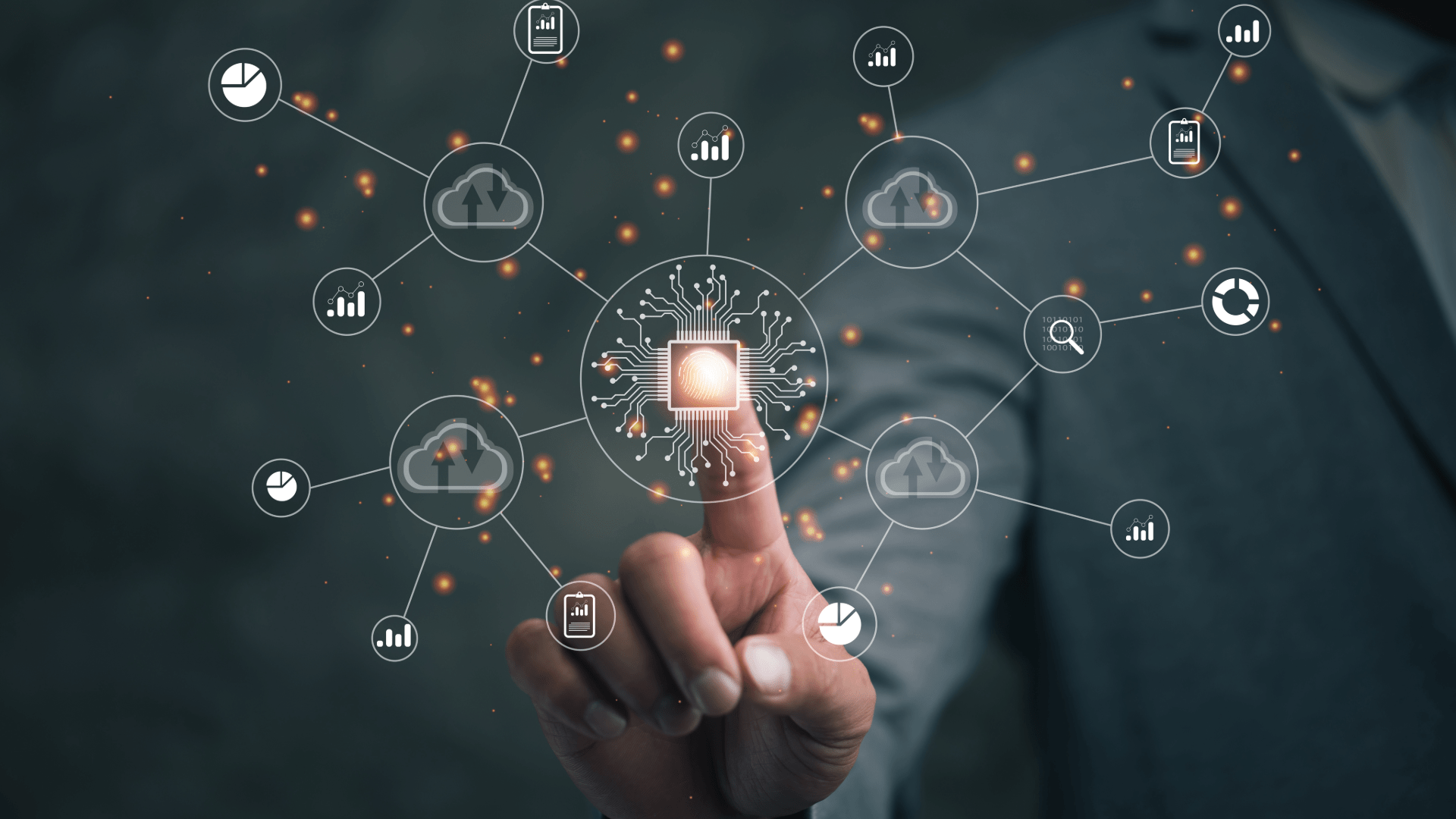1. Introduction
Definition of Emerging Technologies
Emerging technologies are innovations that represent significant advancements within their respective fields, often leading to new applications and substantial impacts on society. These technologies are typically in the developmental stage and not yet widely adopted.
Importance of Emerging Technologies in Modern Society
Emerging technologies are driving change across various sectors, from healthcare and manufacturing to entertainment and finance. They have the potential to solve pressing global issues, improve quality of life, and create new economic opportunities.
2. Artificial Intelligence and Machine Learning
Overview of AI and ML
Artificial Intelligence (AI) refers to the simulation of human intelligence in machines programmed to think and learn like humans. Machine Learning (ML) is a subset of AI focused on the development of algorithms that allow computers to learn from and make predictions based on data.
Key Developments and Applications
AI and ML have seen rapid advancements, with applications ranging from speech and image recognition to autonomous vehicles and personalized recommendations in digital services. Notable AI technologies include neural networks, deep learning, and natural language processing.
Impact on Various Industries
AI and ML are transforming industries by enabling smarter decision-making and automation. In healthcare, AI is used for diagnosing diseases and personalizing treatment plans. In finance, it aids in fraud detection and risk management. The retail sector uses AI for customer insights and inventory management.
Ethical Considerations and Future Directions
While AI and ML offer numerous benefits, they also pose ethical challenges, such as bias in decision-making, privacy concerns, and the potential for job displacement. Ensuring ethical AI development and implementation is crucial for maximizing benefits and minimizing risks.
3. Blockchain Technology
Explanation of Blockchain
Blockchain is a decentralized digital ledger technology that records transactions across multiple computers securely and transparently. Each block in the chain contains a number of transactions and is linked to the previous block.
Major Uses Beyond Cryptocurrencies
While blockchain is best known for its role in powering cryptocurrencies like Bitcoin, its applications extend to supply chain management, healthcare, voting systems, and more. It provides enhanced security and transparency, making it ideal for various industries.
Impacts on Security and Transparency
Blockchain’s decentralized nature and cryptographic security make it highly resistant to tampering and fraud. This enhances trust in digital transactions and can streamline processes across multiple sectors.
Challenges and Future Potential
Despite its advantages, blockchain faces challenges, including scalability, regulatory issues, and energy consumption. Future developments may address these challenges, leading to broader adoption and new innovative applications.
4. Internet of Things (IoT)
What is IoT?
The Internet of Things (IoT) refers to a network of interconnected devices that communicate and exchange data over the internet. These devices range from household appliances to industrial machines, all embedded with sensors and software.
Applications in Smart Homes, Healthcare, and Industry
IoT has diverse applications, such as smart homes with automated lighting and heating, healthcare with remote monitoring of patients, and industrial IoT for predictive maintenance of machinery. These applications enhance efficiency and convenience.
Benefits and Security Concerns
While IoT brings significant benefits, including improved resource management and real-time monitoring, it also raises security and privacy concerns. Protecting IoT devices from cyberattacks is crucial for safeguarding sensitive data and maintaining trust.
Future Trends
The future of IoT includes more advanced connectivity, integration with AI for smarter decision-making, and widespread adoption in urban infrastructure (smart cities). Enhanced security measures and standards will be essential as IoT continues to grow.
5. 5G Technology
Overview of 5G
5G is the fifth generation of wireless technology, offering faster speeds, lower latency, and greater capacity compared to previous generations. It enables a new era of connectivity, supporting advanced applications and services.
How it Differs from Previous Generations
5G differs from 4G and earlier generations by providing significantly higher data transfer rates, improved reliability, and the ability to connect a massive number of devices simultaneously. It supports enhanced mobile broadband, massive IoT, and ultra-reliable low-latency communications.
Applications and Impacts on Connectivity
5G’s capabilities enable innovations such as real-time remote surgery, autonomous vehicles, and immersive AR/VR experiences. It also facilitates the growth of smart cities and enhances the performance of existing applications.
Challenges and Global Deployment
Deploying 5G globally involves challenges like the need for new infrastructure, regulatory hurdles, and addressing potential health concerns. However, the benefits of 5G in driving technological progress and economic growth are substantial.
6. Augmented Reality (AR) and Virtual Reality (VR)
Differences Between AR and VR
Augmented Reality (AR) overlays digital information onto the real world, enhancing the user’s perception of their environment. Virtual Reality (VR) creates a fully immersive digital environment, isolating the user from the physical world.
Applications in Gaming, Education, and Training
AR and VR have revolutionized gaming, providing immersive experiences. In education, they offer interactive learning environments, while in training, they enable realistic simulations for skills development in fields like medicine and aviation.
Technological Advancements and Challenges
Recent advancements include more powerful hardware, improved graphics, and better user interfaces. Challenges remain, such as reducing motion sickness in VR, enhancing AR accuracy, and making the technologies more accessible and affordable.
Future Possibilities
The future of AR and VR includes more seamless integration with everyday life, wider adoption in professional settings, and innovations that blend the physical and digital worlds. These technologies will continue to evolve, offering new ways to interact and experience digital content.
7. Quantum Computing
Basics of Quantum Computing
Quantum computing leverages the principles of quantum mechanics to process information in ways that classical computers cannot. Quantum bits, or qubits, can represent and process multiple states simultaneously, enabling exponential increases in computing power.
Potential Applications in Various Fields
Quantum computing has the potential to revolutionize fields such as cryptography, material science, drug discovery, and complex system modeling. It can solve problems that are currently intractable for classical computers.
Current State of Development
While quantum computing is still in its early stages, significant progress has been made by companies like IBM, Google, and D-Wave. Prototype quantum computers are already demonstrating the potential for solving specific problems faster than classical computers.
Future Implications and Challenges
The future of quantum computing involves overcoming technical challenges, such as error correction and qubit stability. Successful development could lead to breakthroughs in numerous scientific and industrial domains, fundamentally transforming technology.
8. Biotechnology and Genomics
Overview of Biotechnology
Biotechnology involves using living organisms or their systems to develop products and technologies for various applications. Genomics, a key area of biotechnology, focuses on the study of genomes, the complete set of an organism’s DNA.
Advances in Genetic Engineering and CRISPR
Genetic engineering techniques, especially CRISPR-Cas9, have revolutionized the ability to edit genes with precision. These advances enable developments in medicine, agriculture, and biofuels
, among other fields.
Applications in Medicine and Agriculture
In medicine, biotechnology enables personalized treatments, regenerative medicine, and advanced diagnostics. In agriculture, it leads to genetically modified crops with improved yields and resistance to pests and diseases.
Ethical and Regulatory Issues
Biotechnology raises ethical and regulatory concerns, such as the potential for gene editing in humans, environmental impacts, and the need for robust regulatory frameworks to ensure safety and ethical practices.
9. Renewable Energy Technologies
Importance of Renewable Energy
Renewable energy technologies are crucial for addressing climate change, reducing dependence on fossil fuels, and promoting sustainable development. They include solar, wind, hydro, and bioenergy.
Advances in Solar, Wind, and Battery Technologies
Significant advancements have been made in solar panel efficiency, wind turbine design, and battery storage solutions. These technologies are becoming more cost-effective and widely adopted.
Impact on the Environment and Economy
Renewable energy reduces greenhouse gas emissions, lessens air pollution, and creates economic opportunities through job creation and energy independence. It also stimulates innovation in energy systems.
Future Directions
The future of renewable energy involves continued technological improvements, integration with smart grids, and the development of large-scale energy storage solutions. Policies and investments will play a key role in accelerating the transition to a sustainable energy future.
10. Autonomous Vehicles
Current State of Self-Driving Technology
Autonomous vehicles, or self-driving cars, use AI, sensors, and advanced algorithms to navigate and operate without human intervention. Companies like Tesla, Waymo, and Uber are leading the development of this technology.
Applications in Transportation and Logistics
Autonomous vehicles have applications in personal transportation, ride-sharing services, and logistics. They promise increased safety, reduced traffic congestion, and improved efficiency in goods delivery.
Safety, Regulatory, and Ethical Issues
The deployment of autonomous vehicles raises safety concerns, regulatory challenges, and ethical questions about decision-making in critical situations. Establishing robust regulations and addressing public concerns are essential for their widespread adoption.
Future Outlook
The future of autonomous vehicles includes advancements in AI, more extensive real-world testing, and integration with smart city infrastructure. As technology matures, autonomous vehicles are expected to become a common mode of transportation, transforming mobility.
11. 3D Printing and Additive Manufacturing
Basics of 3D Printing
3D printing, or additive manufacturing, involves creating three-dimensional objects by layering materials based on digital models. It allows for the production of complex shapes and customized items.
Applications in Industry, Healthcare, and Daily Life
3D printing is used in various industries, including aerospace, automotive, healthcare, and consumer goods. In healthcare, it enables the production of customized prosthetics and implants. In daily life, it offers creative and practical solutions for personalized products.
Innovations and Market Trends
Innovations in 3D printing include new materials, faster printing processes, and larger-scale printers. Market trends indicate increasing adoption and integration into traditional manufacturing processes.
Future Potential
The future of 3D printing involves greater use in mass production, on-demand manufacturing, and the development of new applications in emerging fields. Continued innovation will expand the capabilities and impact of additive manufacturing.
12. Nanotechnology
Explanation of Nanotechnology
Nanotechnology involves manipulating matter at the nanoscale (one billionth of a meter) to create new materials and devices with unique properties. It has applications in medicine, electronics, energy, and materials science.
Applications in Medicine, Electronics, and Materials Science
In medicine, nanotechnology enables targeted drug delivery and advanced diagnostic tools. In electronics, it leads to smaller, more efficient devices. And In materials science, it creates stronger, lighter, and more durable materials.
Current Research and Development
Research in nanotechnology is focused on improving existing applications and discovering new uses. Innovations include nanosensors, nanorobots, and nanomaterials with enhanced properties.
Future Prospects
The future of nanotechnology holds the promise of breakthroughs in various fields, including healthcare, environmental protection, and advanced manufacturing. As research progresses, nanotechnology will continue to drive innovation and address global challenges.
13. Cybersecurity Technologies
Importance of Cybersecurity
Cybersecurity is essential for protecting digital information, systems, and networks from cyber threats. With increasing digitalization, robust cybersecurity measures are critical for safeguarding privacy, data integrity, and national security.
Emerging Trends and Technologies
Emerging cybersecurity trends include AI-driven threat detection, blockchain-based security solutions, and zero-trust architecture. These technologies enhance the ability to detect, prevent, and respond to cyber threats.
Impact of AI and Blockchain on Security
AI enhances cybersecurity by automating threat detection and response, while blockchain provides secure, tamper-proof transaction records. Together, they offer powerful tools for enhancing security and trust.
Future Challenges and Solutions
The future of cybersecurity involves addressing challenges such as evolving cyber threats, the need for skilled professionals, and the integration of advanced technologies. Continuous innovation and collaboration are key to building resilient cybersecurity systems.
14. Conclusion
Recap of Key Points
Emerging technologies, including AI, blockchain, IoT, 5G, AR/VR, quantum computing, biotechnology, renewable energy, autonomous vehicles, 3D printing, nanotechnology, and cybersecurity, are transforming various sectors and creating new opportunities.
The Interconnectedness of Emerging Technologies
These technologies are increasingly interconnected, with advancements in one area driving progress in others. For example, AI enhances cybersecurity, while IoT relies on 5G connectivity.
The Future of Emerging Technologies and Their Impact on Society
The continued development and integration of emerging technologies will shape the future, offering solutions to global challenges and improving quality of life. Embracing innovation and addressing ethical and regulatory concerns will be essential for maximizing their positive impact on society.









